Part One
American genealogists passionately seek to trace their roots and to understand how the lives of their ancestors fit into a broader historical context.
Particularly for Jews, restricted immigration after World War I, the Holocaust, and the Iron Curtain created immense barriers that separated Americans from their overseas relatives. These trends have reversed, however, during the past several decades. The generation that immigrated prior to World War I has largely died out, and more recent generations have been looking back at the events of the last 150 years and try to make sense of our collective experience.
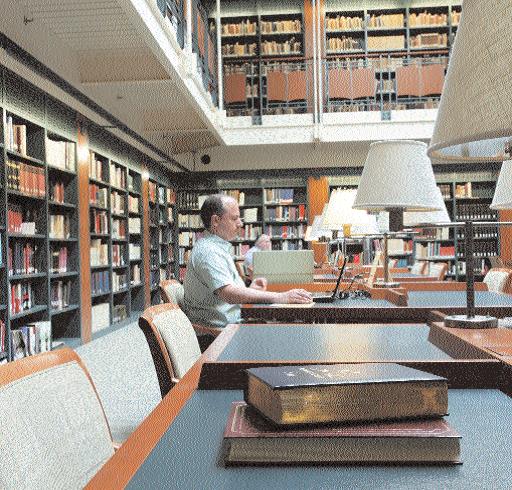
History
Photo: Center for Jewish History
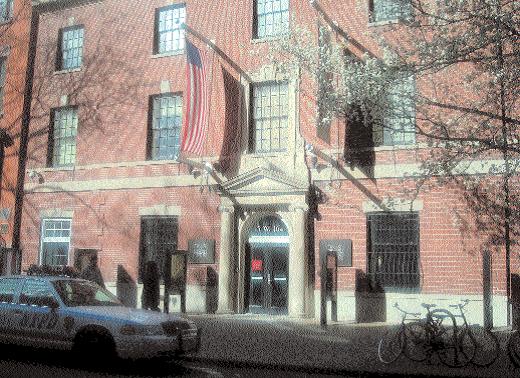
Many Jewish genealogists are also trying to document the fate of relatives who perished during the Holocaust, so their names and lives can be commemorated. Finally, the exodus of Jews from the former Soviet Union and other Eastern European countries has led many new immigrants to seek connections with the descendants of family members who arrived a century or more ago.
In pursuit of their past, Jewish genealogists often find themselves at the Center for Jewish History (CJH, www.cjh.org), one of the world’s great repositories of books, manuscripts, and cultural objects documenting the heritage of the Jewish people. Located at 15 W. 16th Street (between 5th and 6th Avenues) in Manhattan, CJH opened in the year 2000 as a consortium of five partner organizations: American Jewish Historical Society, American Sephardi Federation, Leo Baeck Institute, Yeshiva University Museum, and YIVO Institute for Jewish Research. Besides their administrative offices and library, archives, and museum collections, CJH also houses classrooms, exhibit spaces, an auditorium for public events, and the Ackman and Ziff Family Genealogy Institute.
The various collections at CJH naturally contain a host of resources for genealogy, including reference books, original records, photographs, videos, and sound recordings.
The YIVO Institute for Jewish Research (www.yivoinstitute.org) was founded in Vilna, Poland (now Vilnius, Lithuania) as the Yiddish Scientific Institute in 1925 and relocated its headquarters to NYC in 1940. YIVO is dedicated to the history and culture of Ashkenazi Jewry and serves as a world-class resource center for East European Jewish studies, Yiddish language, literature, and folklore, and the Jewish immigrant experience in America.
The YIVO Library has 360,000 volumes in 12 major languages, and the YIVO Archives contains 23,000,000 manuscripts, documents, photographs, sound recordings, art works, films, posters, sheet music, and other artifacts. The Miriam Weiner Genealogy Collection was created in 2006.
YIVO Institute for Jewish Research
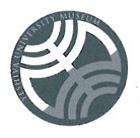
Jewish Research logo
YIVO’s resources for researching pre-war East European Jewish family history include:
- Bund Archives and Library — documenting the Jewish labor movement from the late 19th & 20th centuries
- Lithuanian Jewish Communities,1844-1940 — records of more than 100 Jewish communities, 1919-1926, with extensive files on Kedainiai, Marijampole, Panevezys, Siauliai, Ukmerge, Vilkaviskis, and seven other towns; other records include communal, burial society, and charitable society registers, mainly from Kaunas (Kovno)
- Personenstandarchiv Koblenz, 1677-1938—photocopies of confiscated Jewish vital and cemetery records, community registers, and tax lists from such places as Berlin, Dessau, and Frankfurt an der Oder.
- Rabbinical and Historical Manuscripts Collection, 1567-1930s—materials from continental Europe, Palestine, Tunisia, and the U.S., including communal documents like registers and minute books • Territorial Collection—assorted materials on Jewish life in various countries around the world, including some vital records
- Vilna Jewish Community Council, 1800-1940 — incomplete series of taxpayer lists; vital records, 1909-1930; lists of Jews, 1925 and 1937
- The Holocaust and post-war refugee experiences are extensively documented in a variety of records and reference sources at YIVO:
- Institut der NSDAP zur Erforschung der Judenfrage (Frankfurt am Main), 1930-1945 — includes police identification cards of German Jews, 1938-1942
- Original documents from the Warsaw, Lodz, and Vilna Ghettos
- Union Generale des Israelites de France (UGIF), 1940-1944—includes identification cards of French Jews, and a census of Jews living in France (excluding Paris)
- Records of refugee assistance organizations like the American Jewish Joint Distribution Committee (AJDC, “the Joint”), German Jewish Children’s Aid, Hebrew Immigrant Aid Society (HIAS), Jewish Colonization Association (ICA), National Refugee Service, and United Service for New Americans (USNA)—including case files, emigration lists, and passenger lists
- Lists of survivors and victims of the Holocaust
- Thousands of handwritten eyewitness accounts by Holocaust survivors, collected from 1945 to the present
- Newspapers and periodicals published by Jewish refugees in displaced persons (DP) camps in Germany, Austria, and Italy
- 750+ Yizkor (memorial) books commemorating destroyed Jewish communities American Jewish history is also extremely well represented in YIVO’s collections:
- Records of the American Jewish Committee, Educational Alliance, Hebrew Immigrant Aid Society (HIAS), United Hebrew Trades, and other organizations
- Records of the Workmen’s Circle and 1,000+ landsmanshaftn (immigrant mutual aid societies)—membership lists, burial society records, commemorative publications
- 200+ autobiographies of Jewish immigrants collected by YIVO in 1942
- Private papers of numerous cultural figures and communal leaders
- Extensive Yiddish music and theater collection
The Leo Baeck Institute (LBI, www.lbi.org) is devoted to studying the history and preserving the culture of German-speaking Jewry, including the Jewish communities of Germany, Austria, and other German-speaking areas of Europe. Founded in 1955, LBI was named for Rabbi Leo Baeck, who led German Jewry during the Nazi era and survived the Theresienstadt (Terezin) concentration camp.
Approximately 30 percent of LBI’s holdings relate to Austrian history. The Austrian Heritage Collection documents the history of Austrian Jews who fled to the U.S. during the Nazi years, and consists of completed questionnaires, contemporary documents, and oral history interviews with hundreds of survivors. LBI has collected numerous library sources for genealogy and local history, such as Jewish genealogy journals, family histories, biographies and biographical dictionaries, archives directories, and historical newspaper clippings in print, microform, and/or electronic formats. Regional and local community histories are available for Baden, Bavaria, Bohemia, Hesse, Moravia, Rhine Valley, Silesia, Westphalia, Württemberg, and many other locations.
Leo Baeck Institute
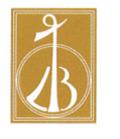
Institute logo
LBI also has a broad variety of archival sources. These are a few of the most important for genealogy:
- Berthold Rosenthal Collection — manuscripts, correspondence, history and genealogies of the Jews in Baden; family trees,
- surname adoptions, lists of residents, and memorial books of many communities
- Jacob Jacobson Collection — records of numerous communities and organizations
- John H. Bergmann Collection — history of the Jews of Laupheim; family trees, notes on Swabian communities
- John H. Richter Collection — family histories and genealogies from several regions
- Rudolf Jakob Simonis Collection — several hundred family trees, family histories, and related correspondence for Berlin, northern
- Germany, and Sweden
- Ele Toldot [These Are the Generations] — transcriptions of burial records from Frankfurt am Main, 1241-1824
- For holocaust research, LBI has the following resources, among others:
- Gedenkbuch: Opfer der Verfolgung der Juden, 1933-1945.
- [Memorial book: Victims of the Persecution of the Jews, 1933-1945]
- Lists German Jews who perished, with birth and death place and cause of death if known
- German Minority Census of 1939: includes Sudeten region annexed from Czechoslovakia
- Shanghai archival collections: clippings, interviews, posters, correspondence, videos, municipal records, address books, and a list of refugees who died while in Shanghai
Online Access to Digitized Collections
CJH has a growing online presence through a variety of access points. The primary research portal is at http://tinyurl.com/searchcjh. CJH’s digitized collections of rare books, personal letters, official decrees, maps, memoirs, posters, photographs, scrapbooks, oral histories, finding aids to archival collections, and other items may be viewed at http://access.cjh.org. CJH’s Flickr photostream is at www.flickr.com/photos/center_for_jewish_history
Part Two
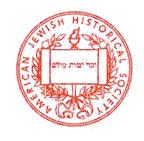
Historical Society
Located at 15 West 16th Street (between 5th and 6th Avenues) in Manhattan, the Center for Jewish History (CJH) opened in the year 2000 as a consortium of five partner organizations: American Jewish Historical Society, American Sephardi Federation, Leo Baeck Institute, Yeshiva University Museum, and YIVO Institute for Jewish Research. Besides their administrative offices and library, archives, and museum collections, CJH also houses classrooms, exhibit spaces, an auditorium for public events, and the Ackman and Ziff Family Genealogy Institute.
The various collections at CJH naturally contain a host of resources for genealogy. Part I of this article covered the YIVO Institute for Jewish Research and the Leo Baeck Institute. Part II will include the American Jewish Historical Society, the American Sephardi Federation, and the Ackman and Ziff Family Genealogy Institute. The online resources of all the CJH partners can be accessed at search.cjh.org and a search of digital resources can be found at digital.cjh.org.
The American Jewish Historical Society (AJHS, www.ajhs.org) — the oldest ethnic historical society in the U.S. — was founded in 1892 as a membership organization, research library, archives, and museum. Today its library has 60,000 volumes covering Jewish immigration, religious, intellectual, political and economic life, gender relations and family life, and participation in the arts in the Americas. AJHS’s 1,300 archival collections consist of institutional records, such as the records of schools, synagogues, and orphanages, and personal papers, which include the papers and artifacts of individuals and families.
Among the most important records for genealogists are those of collections listed in the box on the right.
American Jewish Historical Society
Selected immigration record collections:
- Baron de Hirsch Fund — administrative and property transfer records, deeds, student files, Jewish farmers list, and records of the Jewish Agricultural Society, Woodbine Colony (NJ), Woodbine Agricultural School, and Baron de Hirsch Trade School
- Industrial Removal Office (IRO) — 44,000 records of immigrants relocated from Eastern cities to the interior of the US • Jewish Immigrant Information Bureau — agency correspondence and ship passenger lists of immigrants who came through the port of Galveston, TX
- Hebrew Immigrant Aid Society, Boston Office — immigrant arrival records for Boston and Providence, RI, 1882-1929, and an incomplete chronological list of ship arrivals and ships’ passenger lists, 1904-1953. (This collection is available at AJHS’s New England Archives, located on the fifth floor of the NEHGS Library at 99-101 Newbury Street, Boston, MA.)
The records of various communal organizations are also significant for family history:
- Orphanage Records — Brooklyn Hebrew Orphan Asylum, 1879-1953; Hebrew Guardian Sheltering Society of NY, 1907-1942; Hebrew Infant Asylum of the City of NY, 1895-1908; Hebrew Orphan Asylum, 1862- 1940; Home for Hebrew Infants, 1922-1953. These orphanages later merged with the Jewish Child Care Association of NY.
- NY County Hall of Records, Selected Incorporation Papers, 1848- 1920 — Incorporation papers of approximately 10,000 Jewish organizations, including congregations, fraternal societies, hometown associations, and other communal institutions
- Synagogue collections — records of more than 25 synagogues from large and medium-sized cities TWO MAJOR COLLECTIONS RELATE TO U.S. MILITARY SERVICE:
- American Jewish Committee, Office of War Records — detailed questionnaire data on more than 4,000 Jewish World War I soldiers, copies of official military documents, letters, photos, diaries, and news clippings
- National Jewish Welfare Board, Bureau of War Records — data cards on individuals in the service, 1940-1969; case files for soldiers who were wounded
AJHS’s collections of personal papers include those of such notable American Jews of the 18th-20th centuries as Haym Salomon, Uriah P. Levy, Moses Michael Hays, Emma Lazarus, Henry Roth, Molly Picon, and Stephen S. Wise. Compiled genealogies, rabbis’ marriage records, and circumcision books are other examples of items that may be found in personal and family papers.
Indexes to several AJHS collections may be searched at www.cjh.org/p/61.
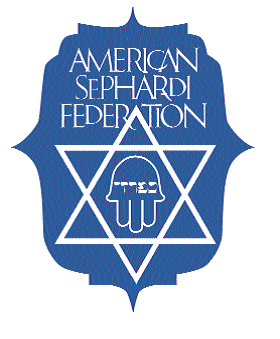
The American Sephardi Federation (ASF, www. americansephardifederation.org), founded in 1973, represents Jews tracing their ancestry to the Iberian Peninsula, the Balkans, North Africa, the Middle East, and Asia. ASF maintains the National Sephardic Library, the only library exclusively devoted to Sephardi and Mizrahi topics and authors in the U.S., and the only Sephardic library and archives in the Western Hemisphere open to the public. Located at CJH, it currently houses 10,000 cataloged items and more than 300 linear feet of archives, including family histories, such as Aciman (Egypt), Hazan (Turkey), Picciotto (Syria and Europe), and Modiano (Greece), as well as published compilations of Sephardic vital records, gravestone inscriptions, records of communal organizations, and family trees from around the world.
The Ackman and Ziff Family Genealogy Institute (www.cjh.org/p/34) was developed with input from representatives of the five CJH partner organizations and the active involvement of the Jewish Genealogical Society. CJH staff and experienced genealogy volunteers offer guidance on general methods, strategies, and resources as well as assistance in accessing the various partners’ collections through the Lillian Goldman Reading Room. The Institute also has its own in-house reference collection of print and electronic resources, and more than 2,000 microfilms on long-term loan from the Family History Library in Salt Lake City. Additionally patrons may order and view FHL films at the Institute. The Genealogy Institute’s Research Guides may be downloaded from www.cjh.org/p/60. Researchers are welcome any time without an appointment, although it is recommended to reserve a microfilm reader in advance.